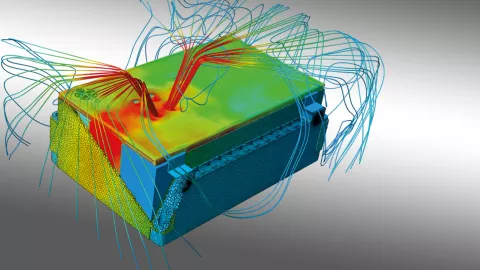
Battery safety is one of the major challenges in the development of electric vehicles with lithium-ion battery systems. Internal short circuits, electrical overload or mechanical damage can cause an uncontrollable rise in battery temperature. If a critical temperature is exceeded in the cell, self-accelerating exothermic chemical reactions generate a huge amount of heat in very short time. As a result, this massive heat release can cause the adjacent cells to overheat as well. In a chain reaction, this can overheat the battery module and, in the worst case, the entire battery pack. This process, also known as thermal runaway, results in severe damage to the battery system or entire vehicle from fire and explosion. In this webinar Juergen Schneider, Solution Manager for Virtual Battery Development and Bernhard Brunnsteiner, Lead Engineer Battery Simulation, present an unique simulation method that allows this problem to be analyzed in detail. Measures to stop this chain reaction or at least to massively slow down thermal propagation can be compared with respect to its effectiveness. This process considers all effects from the thermal runaway of a single cell through the venting process and the melting of the battery components to the layout of the safety vents. Different design measures can be tested virtually to prevent or delay thermal propagation in order to meet the safety requirements for electric vehicles. This solution is part of the AVL eSUITE™, an integrated simulation approach for electrified powertrain development.
Watch now
Juergen Schneider
Bernhard Brunnsteiner